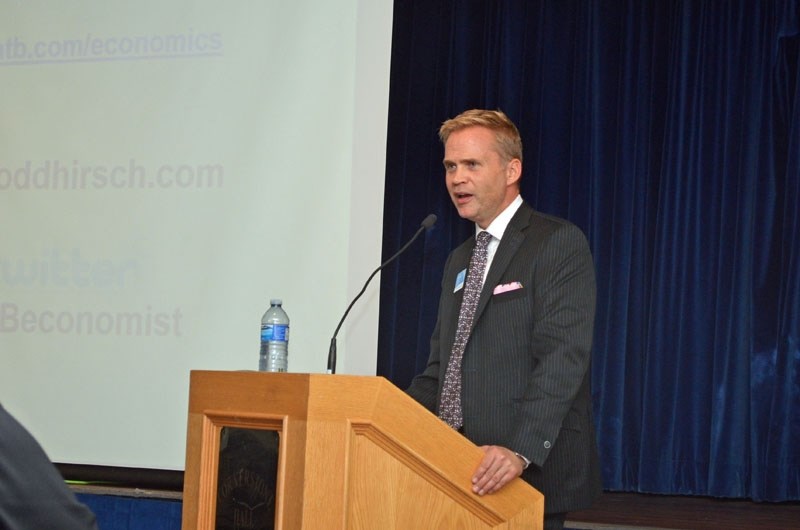An Alberta economist predicted unemployment in Alberta could hit double digits by Christmas when he spoke in St. Albert Tuesday evening.
ATB chief economist Todd Hirsch said he expects labour markets may stabilize by spring of next year, but warned Albertans to brace themselves for what could be "the deepest and most painful part of this recession."
Hirsch was invited to speak to a group St. Albertans at Cornerstone Hall Tuesday evening. About 100 people were in attendance for the sobering, but at times comical breakdown of the local and global economies.
During his 30-minute presentation, Hirsch drew parallels between Alberta's economy and the popular British-American historical drama Downton Abbey, where in the face of all the drama, not a whole heck of a lot happens.
"It's these long drawn-out arcs of character and story development that go on for episodes and episodes," said Hirsch.
Despite going from the fastest growing to "decidedly the coldest" economy in the country, Alberta's economic indicators tell a rather boring story, he explained.
Retail sales, housing prices, restaurant receipts, wholesale trade and manufacturing all demonstrate the same pattern: they reached a record high around late 2014 and early 2015, dropped slightly, then flat-lined.
Two years into a recession, retail sales are down by only 2.7 per cent.
The exception to this lack of drama is of course the labour market, Hirsch said. Since oil prices started to fall in June 2014, more than 60,000 Albertans have been laid off and the unemployment rate has risen from 4.9 to 8.4 per cent.
According to the chief economist the situation is only going to worsen.
Hirch estimates that between now and Christmas the unemployment rate could reach double digits, as the energy sector continues to adapt to a sub-$60 per barrel market.
Hirsch predicts that WTI will hit a sweet spot of $50 to $55 per barrel next year, given two OPEC nations – Nigeria and Venezuela – are on the verge of collapse under low commodity prices.
Prices will however be bound between $40 and $50 per barrel until early 2017 and any increase will be stunted by U.S. shale reserves, which become profitable at $55 per barrel.
This is somewhat good news for Alberta's energy industry – certainty and stability of prices would allow for more planning and investment said Hirsch. But given the higher cost of production in the oilsands, which are profitable between $55 and $95 per barrel, energy sector companies still need to cut costs and maximize efficiencies.
This will more than likely translate to more job cuts.
"Over the last 12 years cost escalation, particularly labour costs, was almost uncontrollable. Now the industry is painfully trying to get those costs back down," said Hirsch.
Make room on Gilligan's Island
After two consecutive years of contraction, Alberta's economy is expected to post modest growth of one to two per cent next year. Hirsch believes this may be the new norm for Alberta.
Hirsch likened Canada's sluggish growth to the popular '60s sitcom Gilligan's Island, where despite the characters' best efforts they are unable to get off the desert island.
"All of us on Gilligan's island, not doing too poorly in terms of standard of living, but economic growth will fail to materialize, at least to the level that we've become used to in the province," he said.




